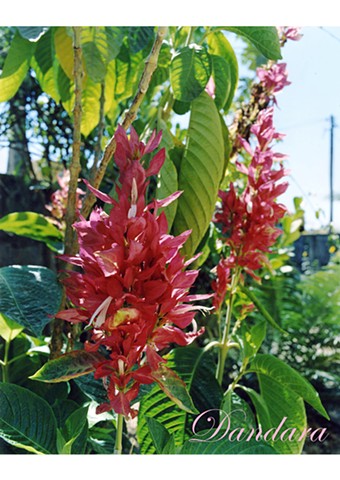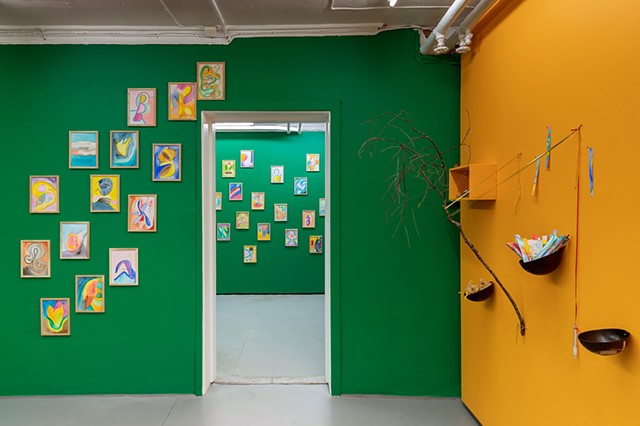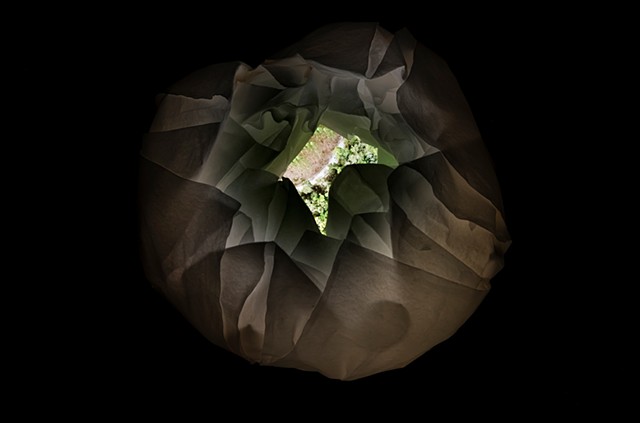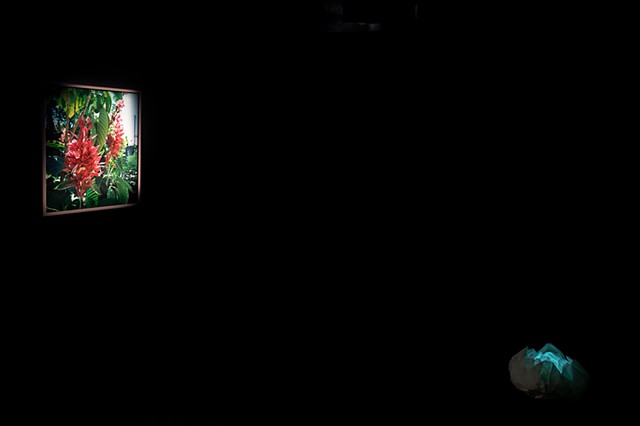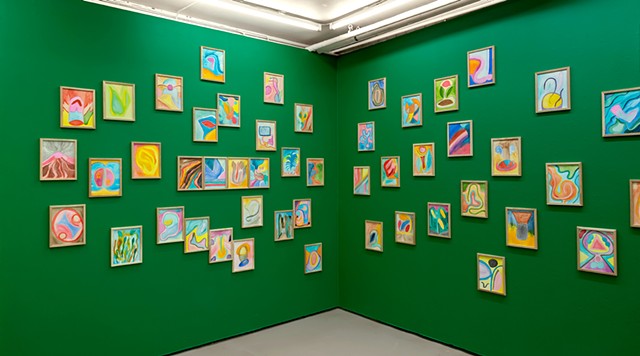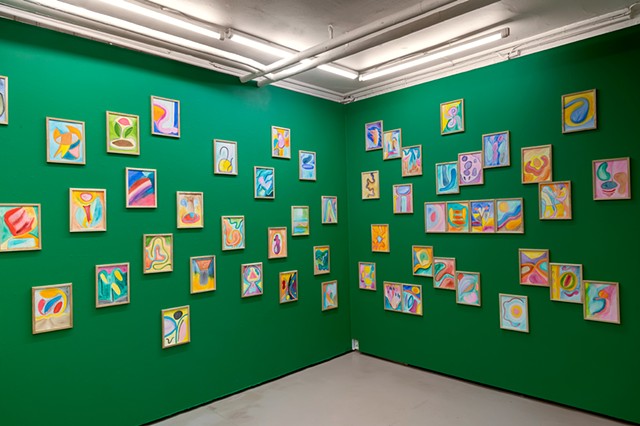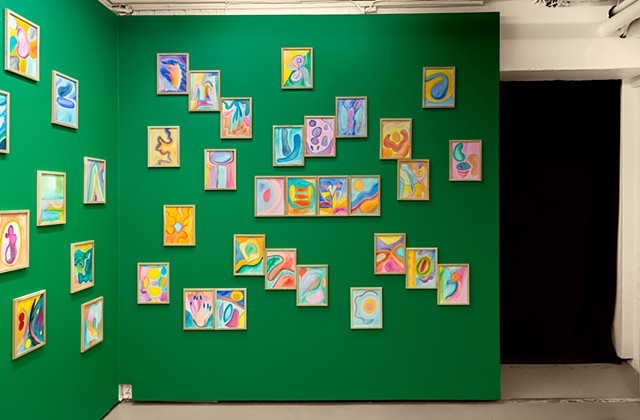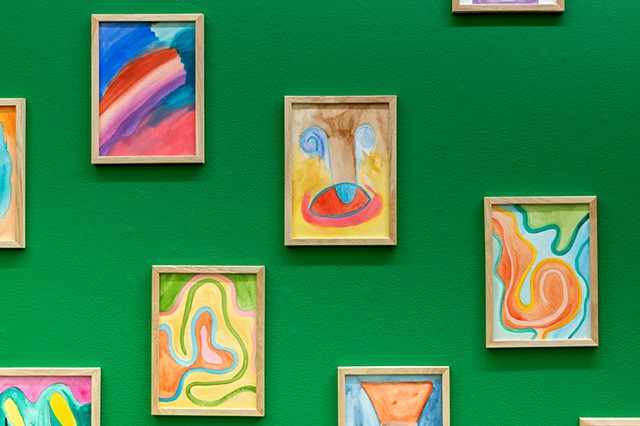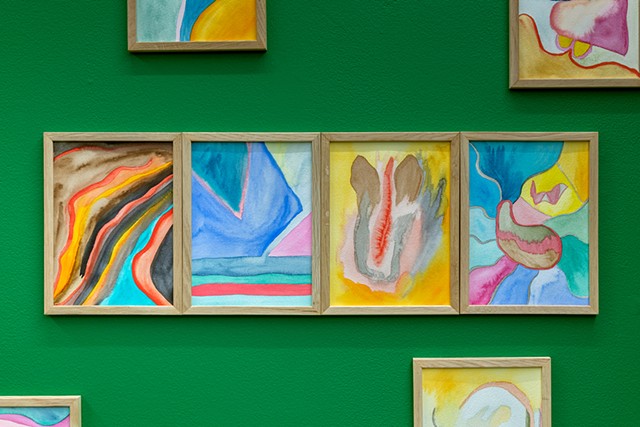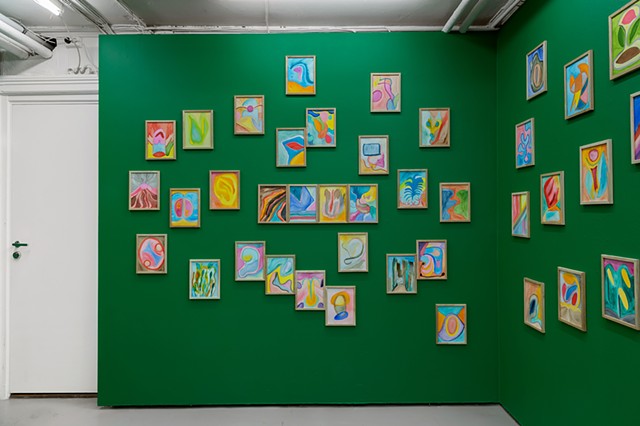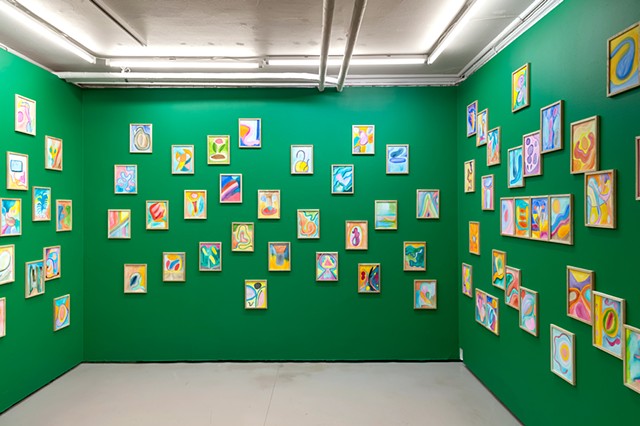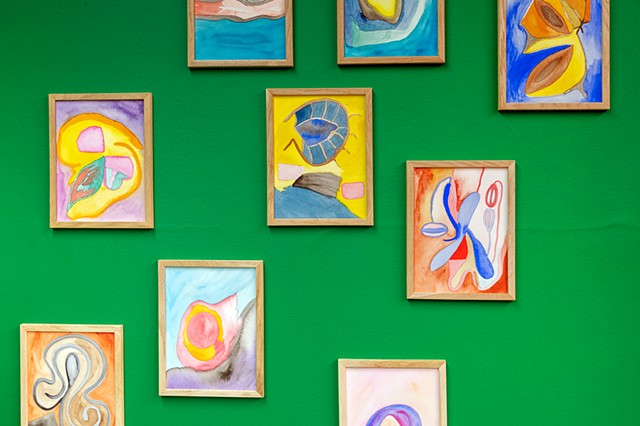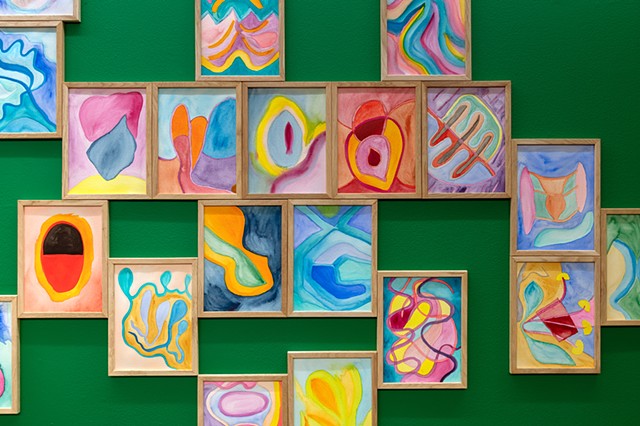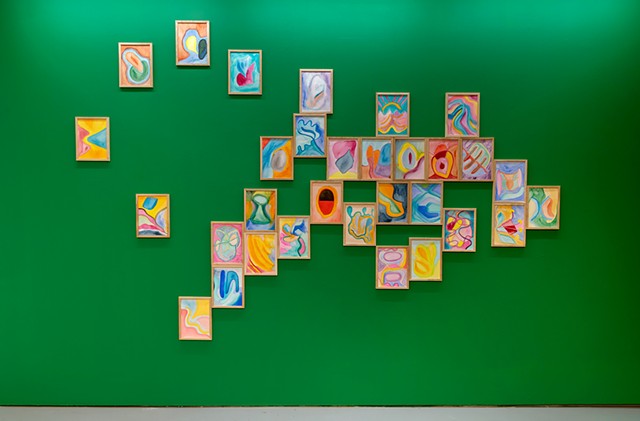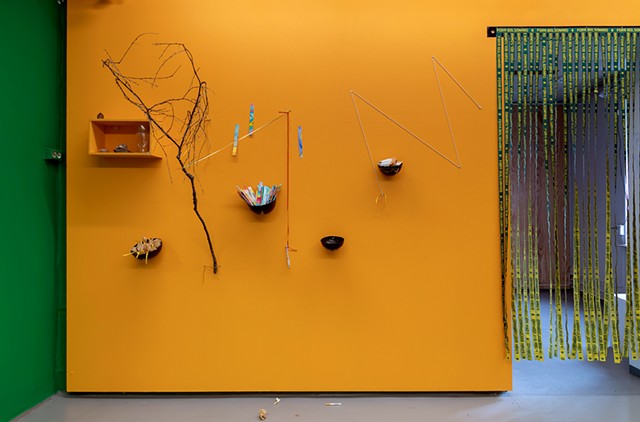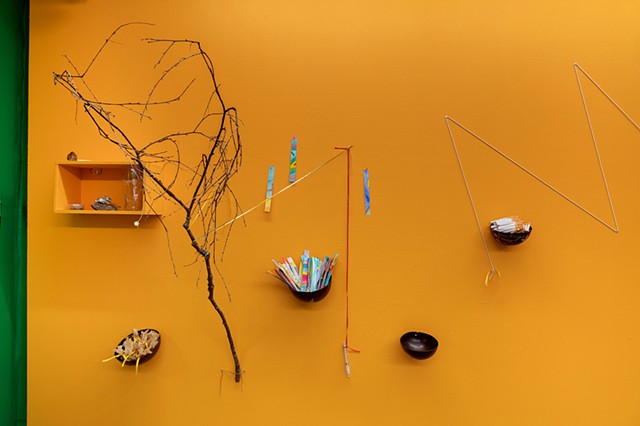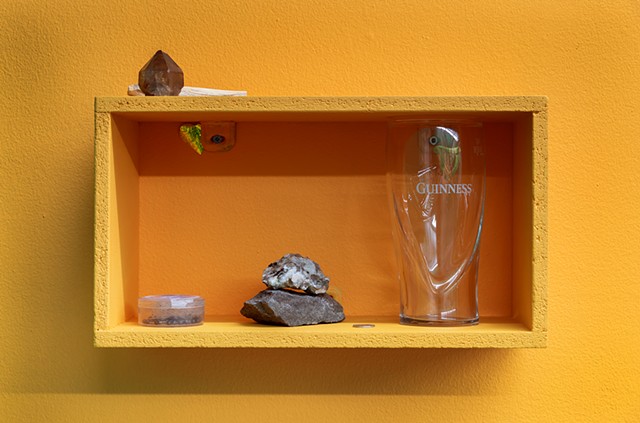Dandara 2022
– Premonitory encounters –
By Tatiana Lozano
its Sunday and I have been dancing yesterday. With the nadi channels open in my body, I get up and look at a mini library I have next to the meditation altar that has been in the corner of my bedroom for some years now. I spot Etel Adnan’s novel, Sitt Marie Rose. I pick up the book, turn it around. My eyes encounter the quote: Love is a supreme violence. First, I feel it in my chest, seat of the Anahanta chakra, the carrier of my heart. I register joy and sorrow mingled together, in almost the exact same proportion. This happens in a micro second, before the mind takes over my bodily reaction to convert it into an explanation. Right there, in that point, between the heart and the mind a question comes up: where does violence actually come from? I google, and from a first glance I find that the etymology of the word violence is the combination of two words: (a duet again) force-to carry. To carry force (toward something). This explanation is made on the most elementary level of the word, and I wonder, in the most elementary level, could we violently decide to carry force toward love in places violence has spread sorrow? Paradoxically, sorrow is one of the ways love is conjured. My mind gets more and more fixated into reading Sitt Marie Rose’s quote in favor of that thought. I’m brought back again to that micro second of joy and sorrow mingled together. I breathe, and then come back to the present and the reason why I am called to write this text. A reason of resonance.
Maya’s doublet dedication to Dandara, (another duet!) takes the form of an exhibition, a healing force in disguise. I go inward, in a sort of premonitory tour. I enter a room, and I am trying to get my focus together, cause, my eyes tend to automatically run a general scan and I just want for them to be present with what it is. I see many colors forming some kind of floating islands. Hand painted intuitive shapes, creating a silent harmony in motion, caused by the special dynamic between them. As I navigate the shapes in the watercolors with my eyes, I find a random note in my pocket: “cultivating a relationship with the quiet voice of intuition”.
Oshun da mi ô, is a mantra given to Maya and the name to the 129 watercolors she has intuitively painted, inspired by her own experiences and memories. The number informs the amount of trans people murdered in Brazil between 2018//2019. The action informs a dedication to any victim of violence, in any form, anywhere in the universe. In a ritual manner, by commemorating those no longer with us, Maya is connecting with the spark of the divine spiritual energy present in it all, acknowledging that beyond their physical death, there is new life. Oshun da mi ô manifests a survival in the creation that resonates in creation as a force.
I turn around, to look in detail at an orange wall that looks magic, and since its magic I’m not able to explain it. I just know that I find myself in front of what seems to resemble an altar. I read somewhere: Memento quod ameris, and as much as my intellect wants to decipher the exact meaning, I win over and tell it just to land somewhere between what it already finds familiar. Perhaps a message from the stars to remember love. I find a pile of sweets with an invitation I immediately resonate with. I eat one, standing in the magic and offer it to Oxúm (Oshun), the goddess (orisha) of freshwater, fertility, beauty, and art, connected to destiny and prophecy.
Memento quod ameris, is dedicated to the Afro-Brazilian warrior woman Dandara who in the 17th century escaped from slavery and joined a free society for escaped slaves in the Brazilian rainforest, a Quilombo. The installation is made out of elements inspired by a shamanic holy place. The audience is invited to participate, as I did, in the sacrificial wall by offering a sweet or tobacco. The offer implies either consuming or placing the elements in the installation as a wish is made.
Fora Bolsonaro!
Suddenly I encounter myself transported to a forest in Brazil, in the middle of a eucalyptus plantation, thinking about self-inflicted destruction as a means of nature to speak to mankind about survival. I drift away into the architecture of the universe and the cosmos of nature present in all of us, in the microcosmos we are. It is a violent act to resist nature’s message.
Killer Forest is an installation by Ingrid Fadnes and Fábio Nascimento, based on their documentary MATA. The title refers to eucalyptus plantations as a deadly phenomenon in the capacity of strangling other life forms in the area, and containing an oil that may self-ignite to great destruction. The images depict the eucalyptus plantation moving in the wind with a dancing ease. The napkins in the installation are a product that comes from such plantations, recycled and collected by Fadnes here in Norway.
I come back to the love and violence paradox, nature and humans, bringing both forth. I close my eyes and try to look inward again. Into the dark, there is a bright flower floating in space, dedicated to the trans woman Dandara dos Santos, who in 2017 got brutally beaten and killed by a mob of homophobic men. The flower is also a reference to the Brazilian nature that is continuously exposed to fires, illegal logging, mining, and extinction. In this juxtaposition, Maya connects us with the preciousness of the much needed diversity our planet depends upon in order to uphold sustainability.
The physical and spiritual dimensions present in the journey that Maya is inviting us in, makes us participant in her exploration of sustainable coping mechanisms and the power of resilience. The invocation of Dandara’s warriors and the 129 trans lives taken, holds an element of violence underneath, like a pulse that paradoxically, gives compass to the loving force of acceptance.
I am getting ready for bed, and I spot in my mini library, a copy of a special warrior book I buy in batches and give away to people when a connection calls for.
I remember that one of the most beautiful and painful impacts registered by every cell in my body, was produced by an excerpt in the book that explains how a warrior must carry a broken heart at all times, cause just in that way, the heart is open and ready to give love. I breathe in that warrior energy, present in Maya’s show and then it hits me: resilience and resistance are two very different ways in which the human experience either accepts or denies, and perhaps we have focused too much into resisting, perhaps, it is about time to acknowledge our broken hearts and let that experience, carry force toward the supremacy of healing love.
Lokah Samastah Sukhino Bhavantu
